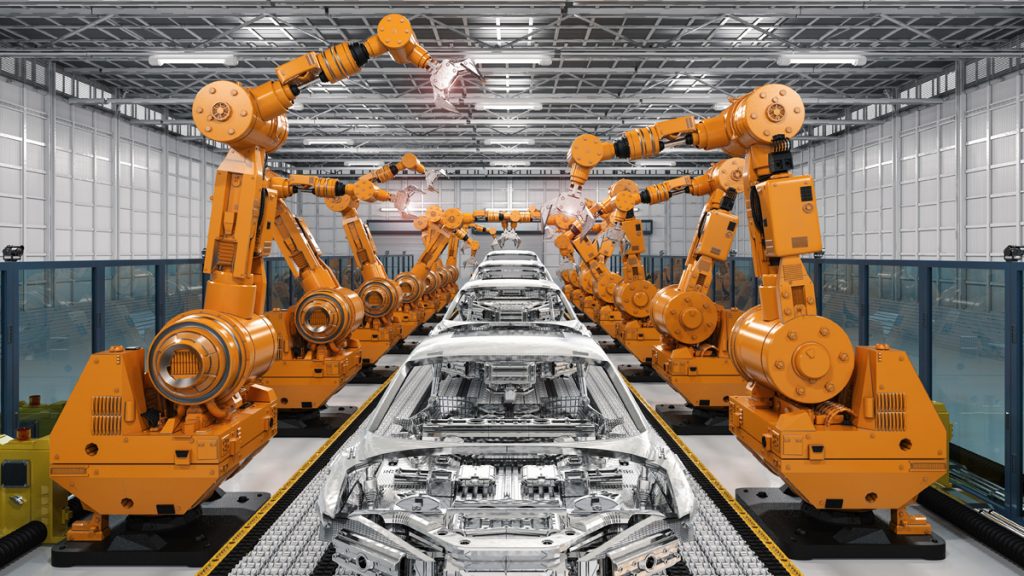Finances
Companies are resorting to robots as a response to labor shortages
The labor shortages and rising inflation has become a real problem for companies who can’t find qualified personnel to fill job openings. Read below to learn what firms across the continent are doing to solve the issue.
Advertisement
Employers in non-automotive industries are ordering more workplace robots to fill job positions.

Currently, the United States is experiencing a record-breaking unemployment low rate. There are millions of job openings, but not a lot of workers willing to fill those jobs. With the rising inflation and a tense labor market, there’s one segment that’s coming out on top: robots. That’s right! During the first quarter of 2022, orders for workplace robots increased over 40% in the United States. Companies are taking advantage of automation to fight labor shortages. Not only that, but also to cut costs as a way to stay operational as inflation levels are nearing a decades high.
According to new data from A3 (Association of Advancing Automation) 9,000 of workplace robots that are collectively worth around $540 million were sold in the U.S. within the first three months of this year. In 2021, during that same period, those figures were relatively lower. Across the entire continent, 11,500 workplace robots sold from January through March, amassing a total of $646 million. That is the highest ever comercialized quantity in a single quarter.
The Association of Advancing Automation represents almost 1,100 component suppliers, automation manufacturers and system integrators in a global capacity. They’re also responsible for academic institutions, research groups, end users and consulting firms worldwide.
More non-automotive customers are buying workplace robots
The first three months of 2022 were the seventh out of the last nine quarters where non-automotive companies acquired more workplace robots than automotive ones. In contrast, non-automotive customers across the continent bought over 6,000 units, while automotive-related companies acquired a little over 5,400 units.
So far this year, workplace robot orders increased 40% in the metals industry, 29% in the rubber and plastics industry and 23% in the electronics, semiconductor and photonics industry. The food and consumer goods industry experienced a 21% jump, while the life science, biomedicine and pharma industry saw a 14% rise in orders. Concurrently, all other industries had an order growth of 56%.
Alex Shikany – A3’s vice president of membership and business intelligence – said that A3’s seen companies of all sizes deploying automation and robotics. Much of that has to do with how attainable that is nowadays. There are many different models with new and improved hardware/software. Not to mention the user-friendly experience has become more enjoyable for customers.
You will be redirected to another website
You’ll receive messages for less than 1 week, with a maximum of 1 message per day. You can unsubscribe anytime by replying STOP. By submitting this form, I confirm that I am 18+ years old and agree to the Privacy Policy and Terms and Conditions. I also provide my signature, giving express consent to receive informational messages via automated emails, SMS, MMS text messages, and other forms of communication. Message frequency may vary as part of our good-faith effort to respond to your inquiry. Message and data rates may apply. Text STOP to cancel. I understand that my consent to receive communications is not a condition of purchase and that I may revoke my consent at any time.
Companies can’t find workers

At the moment, there are approximately 11.4 million job openings in the U.S. According to the Labor Department, 2.9% of the American workforce – approximately 4.4 million people – quit their jobs last April. During the same month, the U.S. economy added about 428,000 nonfarm jobs.
Shikary said that the trend revolving around workplace robots is mostly because companies simply can’t find enough people to fill the available positions. The ongoing inflation has also chipped away at most workers’ salaries. Data shows that the average hourly earnings dropped 2.6% in April.
Moreover, if inflation and cash management are keeping you up at night, we can help. Follow the link below to learn what a cash management account is and how it can assist you with your finances.
Trending Topics

What are the real advantages of cashback?
The advantages of cashback are powerful in the long term, and in this article you will learn how this works. Read on to find out more!
Keep Reading
Temporary Assistance for Needy Families (TANF): get the help you need
Do you know what Temporary Assistance for Needy Families (TANF) is? It is a social program that lifts families out of poverty. Read on!
Keep Reading
U.S. Bank Cash+™ Visa Signature® credit card full review
In our U.S. Bank Cash+™ Visa Signature® card review, you'll learn why this is the perfect product for those who want maximum flexibility!
Keep ReadingYou may also like

Housing Assistance: different programs to help you and your family
Unsure of where to turn for help with your housing situation? Learn everything you need to know about the different types of programs.
Keep Reading
Would a rise in corporate taxes help curb inflation?
Could a rise in corporate taxes help curb inflation? Learn more about how corporate taxes could impact prices and the economy as a whole.
Keep Reading
Up to 25K: OnPoint Community Credit Union Personal Loan review
Achieve your financial goals! Read our OnPoint Community Credit Union Personal Loan review and learn how to get up to $25,000 quickly!
Keep Reading